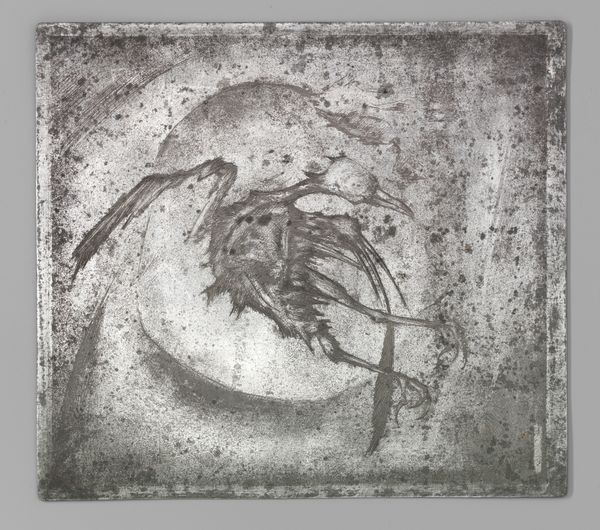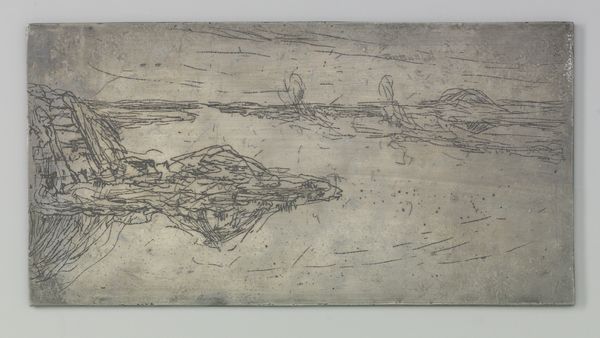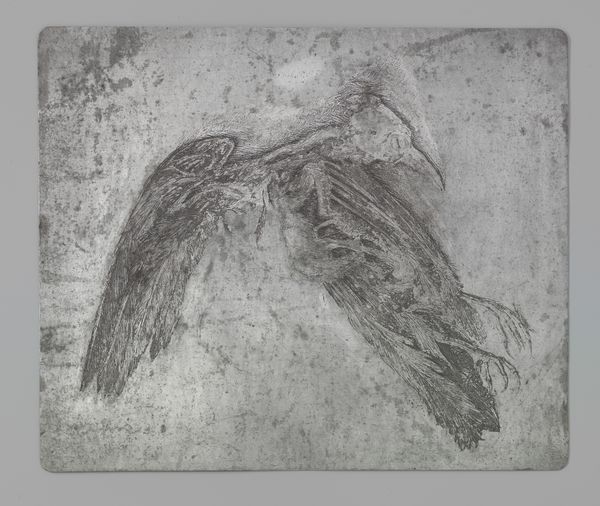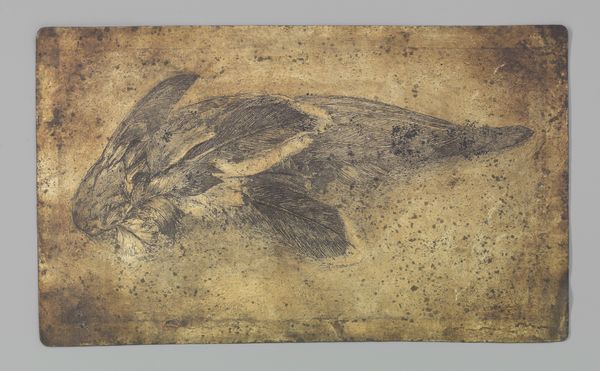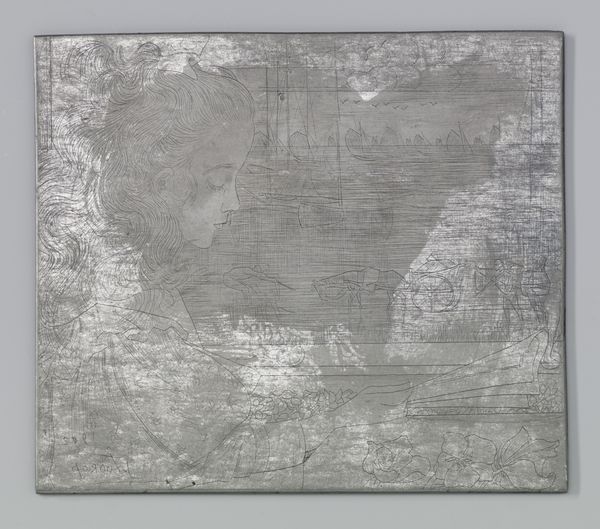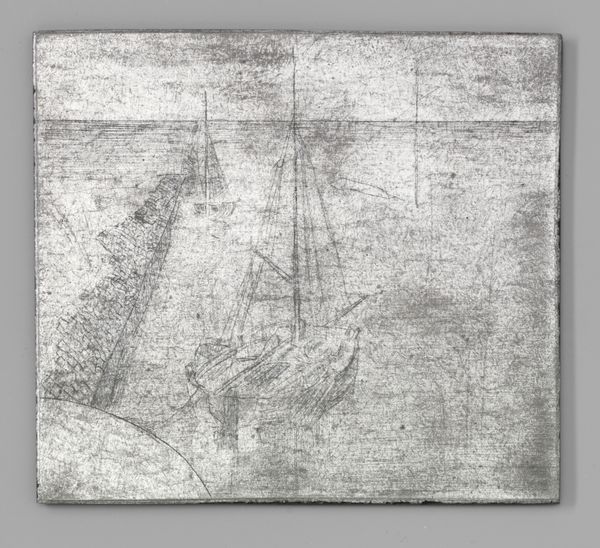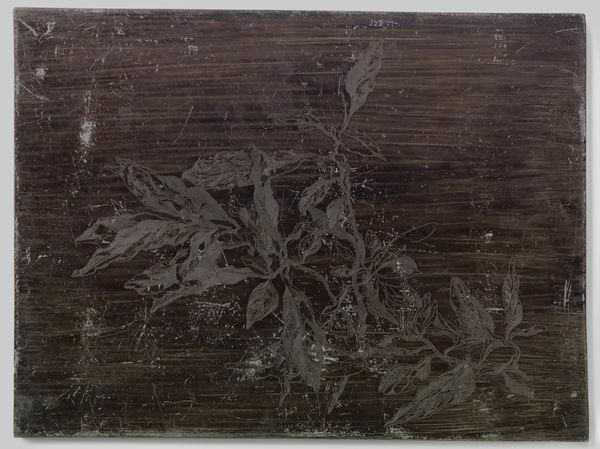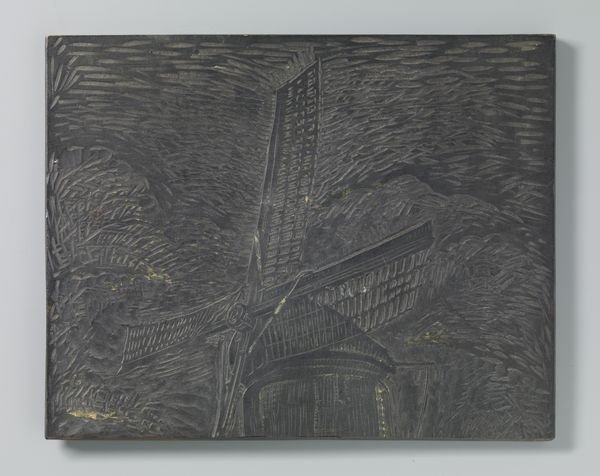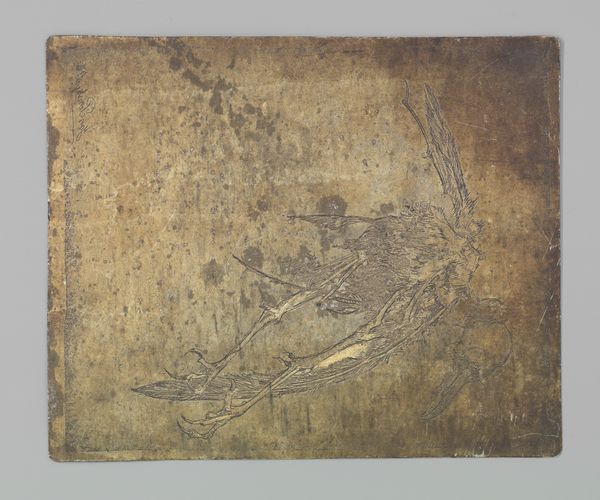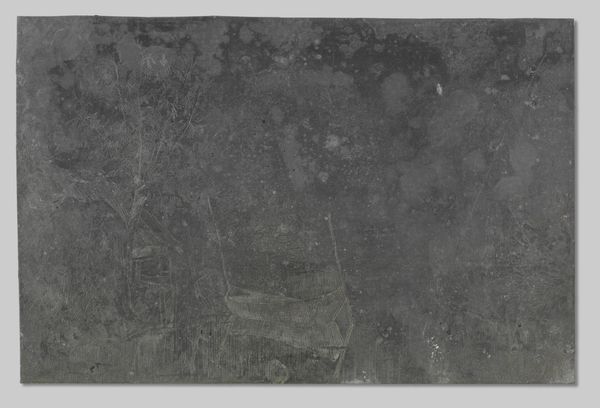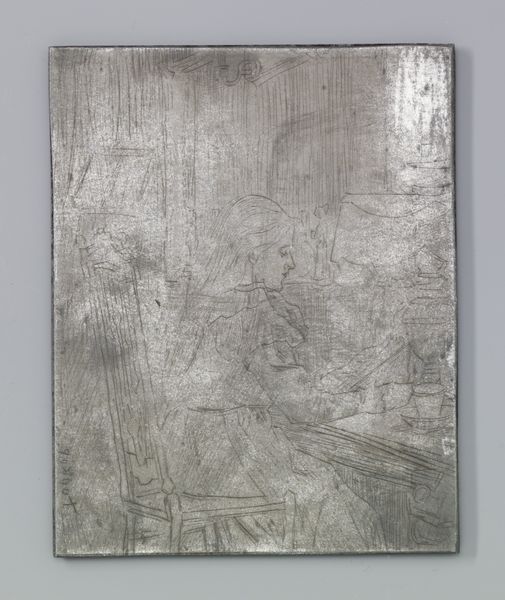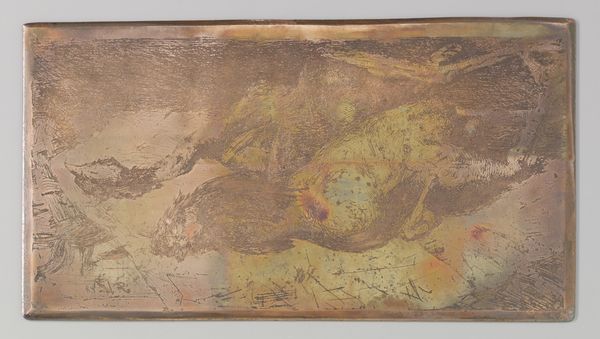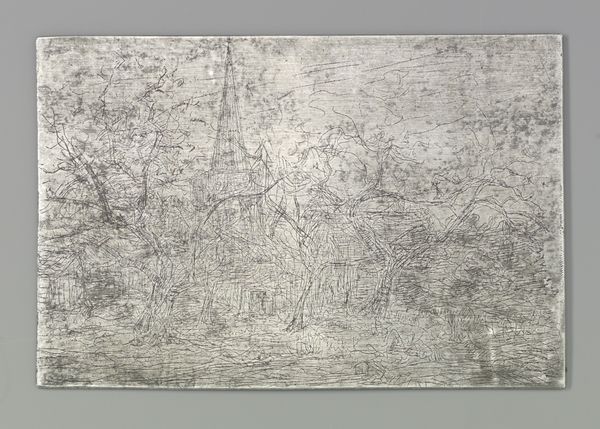
print, etching, graphite
# print
#
etching
#
graphite
#
realism
Dimensions: height 141 mm, width 260 mm
Copyright: Rijks Museum: Open Domain
Editor: This is "Dode vogel met pijp en testje" by Jan Petrus Ponstijn, created sometime between 1940 and 1948. It's an etching with graphite on paper. I'm immediately struck by its stark composition. It's a dead bird with a pipe, rendered in quite a bit of detail. What formal qualities stand out to you in this print? Curator: Indeed. Let's examine the use of line. Notice the contrasting densities in the hatching. Ponstijn uses varied line weights and close, dense lines to create depth and shadow on the bird, juxtaposed with more spare marks for the pipe. What effect do you think the artist intended with this contrast? Editor: It almost seems to direct the eye – focusing it on the bird itself while allowing the other elements to fade slightly into the background. The bird becomes the central form, emphasizing its stillness through the textures. Is there any other symbolism created by form here? Curator: Consider the placement of the pipe itself. Diagonally crossing the bird's body, it creates a distinct linear element that interacts with the organic form of the bird. This linear disruption of natural form calls into question an immediate appreciation of a scene in nature and forces the audience to consider its individual artistic elements. The artist’s intentional interruption encourages engagement. Editor: So it's about the artist calling our attention to what it means to capture life, or in this case death, in a deliberate, representational style, rather than simply the subject matter itself. I now see it less as just a still life and more as a contemplation of representation itself. Curator: Precisely. Through close attention to its formal elements—the line, texture, composition, and contrasting densities—we appreciate the complex artistic construction and conceptual considerations that a surface level viewing misses. Editor: This exercise taught me the meaning behind artistic decision making, by using visual contrasts within the work, allowing an avenue of visual art criticism through structure. Curator: A fascinating realization about formalism and its place in appreciating art, all sparked by an avian encounter.
Comments
No comments
Be the first to comment and join the conversation on the ultimate creative platform.
